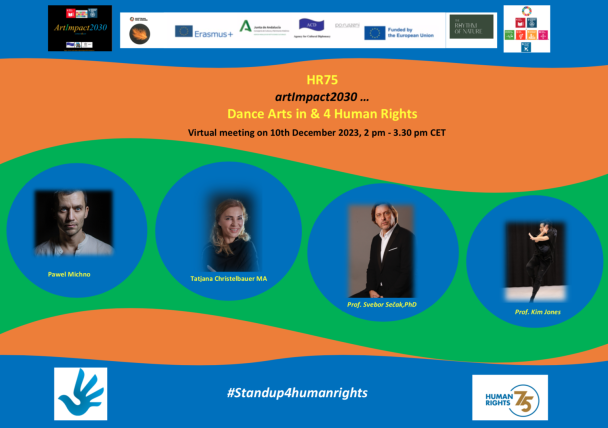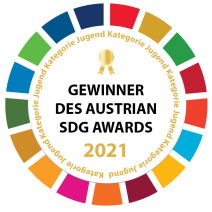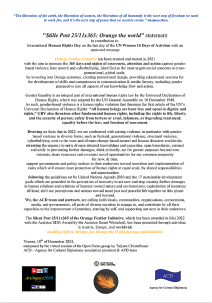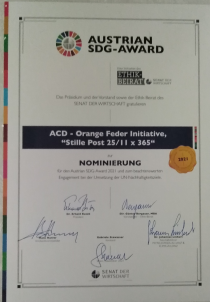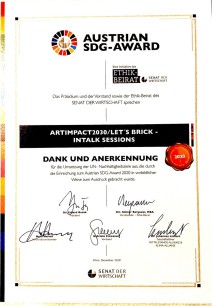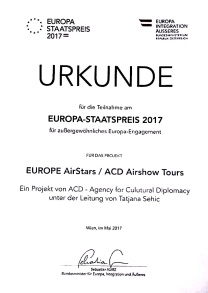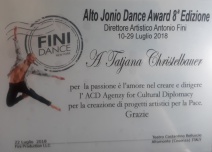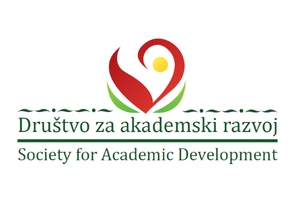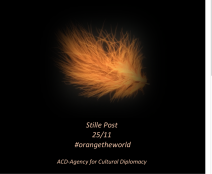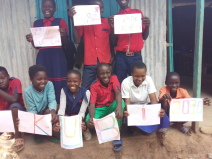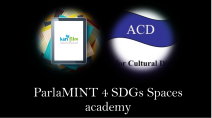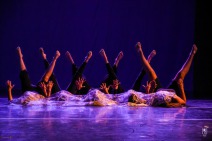
HR75: dance arts in & 4 Human Rights & SDGs
PDF-Dokument [14.0 MB]
Overview
The Universal Declaration of Human Rights (UDHR) is a milestone document in the history of human rights. Drafted by representatives with different legal and cultural backgrounds from all regions of the world, the Declaration was proclaimed by the United Nations General Assembly in Paris on 10 December 1948 (General Assembly resolution 217 A) as a common standard of achievements for all peoples and all nations. It sets out, for the first time, fundamental human rights to be universally protected and it has been translated into over 500 languages.
Human Rights 75 (HR75) marks a significant milestone in our collective journey toward a more just and equitable world.:
In a world where the pursuit of human rights intersects with the urgent need for sustainable development, dance arts practices emerge as a vital force for social transformation.
This meeting invites scholars, practitioners, and artists to explore the profound impact of dance arts on critical facets of human rights and sustainable development goals (SDGs), with a special focus on health, gender equality, ecology, and peace. From freedom of expression to cultural diversity, dance serves as a compelling medium to articulate, challenge, and celebrate the essence of human rights.
To commemorate this occasion, the ACD-Agency for Cultural Diplomacy International Association president organizes and facilitates this meeting, delving into the question:
How dance arts engage
in the practice of Human Rights?
Key Themes that showcase the transformative potential of dance arts in the realm of human rights:
• The transformative power of dance arts in Human Rights,
Dance arts as a form of Cultural Diplomacy: How does dance contribute to cultural diplomacy, fostering understanding and unity across diverse communities?
• Dance arts in sustainable development: addressing global challenges connected with sustainable development goals from the perspective of dance arts students and professionals
• Activism through Movement: Witness the power of dance as a tool for activism, shedding light on human rights issues and advocating for positive change.
• Leadership on the Dance Floor: Examine the parallels between effective leadership and the choreography of dance, emphasizing collaboration, communication, and shared purpose.
Guiding questions
Dance arts in & 4 Human rights
From freedom of expression to cultural diversity, dance serves as a compelling medium to articulate, challenge, and celebrate the essence of human rights.
1. What rights are most threatening from the experience of dance artists?
2. What is the role of dance art in communicating messages about human rights?
Should there be greater linkages between artists and human rights professionals in this regard, without ‘instrumentalizing’ art?
3. How does art help to dismantle stereotypes?
4. What is the role of art in the sustainable development process?
What have been the consequences- both desirable and detrimental, for the association of dance arts with politics and cultural diplomacy?
Cultural Democracy, Gender Equality:
This theme explores the role of dance arts in challenging societal norms and promoting gender equality. We examine how choreography, performance, and dance education can empower individuals, break
down gender stereotypes, and contribute to a more inclusive and equitable world. Furthermore, Cultural Democracy stands as an essential approach to ensure equal and just cultural diplomacy of diverse
traditions and styles within the realm of dance. We explore how embracing and celebrating cultural diversity in dance contributes to a more democratic and inclusive cultural landscape, fostering
mutual respect and understanding.
1. What is the status of artistic freedom in the EU?
2. Is dance art in Europe dominated by a certain group and/or style? 3. What can be done to redress any imbalance and to guarantee equal access to education, practice, and careers in dance
arts?
Dance arts & health
WHO Europe report from 2019 Arts&Health sheds light on the importance of dance arts among other artistic practices, for promoting and supporting physical and mental well-being. We delve into the
holistic potential of dance arts, examining how they contribute to individual and community health. From addressing trauma through movement to promoting inclusive wellness initiatives, our
discussions aim to uncover how dance fosters resilience and & well-being. Find out about relevant organizations, such as social insurance and the pensions fund, devoted to the working and health
insurance rights and conditions for artists.
Ecology approaches in Dance arts:
Dance as a form of reflection on cultural identity, is intricately connected to the environment. This segment investigates the ecological footprint of dance arts, discussing sustainable practices within the field and exploring how movement can amplify conversations on environmental issues, inspiring collective action towards ecological harmony.
Agenda
ArtImpact2030 …dance arts in & 4 human rights
introductory note by the host and organizer of the meeting
Tatjana Christelbauer MA ACD-Agency for Cultural Diplomacy president, dance arts_science_diplomacy practitioner
Special guest contribution: Sherry Grant /NZ performance on piano “Erinnerung” (Op.24) by Croatian-Hungarian composer Dora Pejačević (1885-1923) at her centenary, & reading Sherry’s new poem “You Are The Whisper” (Op.4072), written on 2023-12-09
Flesh presentations (10 min ) of dance arts professionals
on the topic of the meeting
Keynote: Competition Slavenska Prix and the new theater law, current challenges in terms of
human rights and sustainable development
from the perspective of the Croatian Association of Professional Ballet Artists
by
Prof. Dr. Svebor Sečak,PhD
associate professor is a national ballet principal and pedagogue of the Ballet of the Croatian National Theatre in Zagreb, Croatia, and the Dean of the tertiary educational institution Alma Mater
Europaea Dance Academy in Ljubljana, Slovenia
Presentation: “Imperial Gesture revised & the Movement Migration project”
by Prof. Kim Jones
Research Fellow at the NY Public Library at Lincoln Center. Associate Professor at UNC Charlotte and the Founder/Artistic Director of Movement Migration.
Presentation: “The politics of breathing
with”
by Prof. Dr. Carol Brown (absentee)
Head of Dance at the Victorian College of Arts, University of Melbourne, Australia and artist-scholar
Presentation: “The Rhythm of Nature. A brief introduction of the
international project collaboration on the intersection of dance arts & ecology in environmental humanities”
by Pawel Michno
Director and choreographer, professional dancer, and dance teacher. Founder of the Po:ruszeni Dance Arts Association, Warshaw/Poland
The Rhythm of Nature
ERASMUS+ project teams and participants presenting their experiences during the environmental education in dance art project activities
Let´s rain … diplomacy on stage
interactive session: dialogue & exchange among attendees on the views, challenges, perspectives, questions, visions …
Info, contact, registration via Eventbrite platform
and:
Tatjana Christelbauer
info@acdvienna.org

